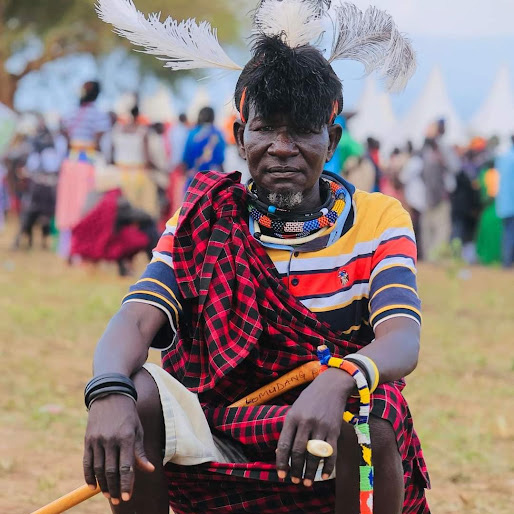The Serengeti teems with life in every corner: from the thunder of migrating hooves to the silent glide of a crowned crane across damp grass. This mosaic of habitats supports hundreds of species, each playing its part in the grand drama of the ecosystem.
Walk beneath acacia canopies at dawn and you’ll glimpse impala nibbling tender shoots, warthogs rooting for bulbs, and baboons chattering in the treetops. By midday, predators emerge: lions yawning atop kopjes, cheetahs crouching low before a sprint, and leopards slinking through shadowed undergrowth.
Lions reign supreme here, their prides weaving social bonds as strong as the tall grasses they stalk through. Males shoulder each other in greeting, while lionesses coordinate hunts across open plains. When dusk falls, you might catch a pride’s roar rumbling across the landscape, a reminder of their ancestral territory.
Leopards and cheetahs share the stage in quieter roles. Leopards prowl acacia woodlands by night, pausing to hoist prey into treetops. Cheetahs, meanwhile, are the daytime ghosts of the plains — their lean frames bursting into 100 km/h chases when springbok or gazelle appear. Spying those tear-streaked faces at dawn feels like discovering a secret of the savanna.
Elephants move here in family groups, mothers leading calves toward waterholes and protecting them from the predators. You’ll watch them dig dusty wallows, trumpeting as they shower one another with earth. Their footprints mark ancient migration routes, carved through generations of tusks and trunks.
Wildebeest and zebra define the Serengeti plains. Herds numbering in the hundreds of thousands follow seasonal rains, trampling grass into fresh shoots behind them.
During calving season, the plains tremble with wildebeest, zebra and other newborns—calves and foals wobbling on wobbly legs as they learn to flee.
Buffalo herds and eland add darker splashes of form, while giraffes peer above all, necks twisting to reach tender leaves.
The list is endless. There are many animals to sightsee here, from the giant mammals to the smallest you can imagine.
Over 500 bird species call the Serengeti home. You’ll spot kori bustards doing their mating dances on bare earth, lilac-breasted rollers flashing jewel-like wings from low branches, and majestic martial eagles scanning for prey from towering kopjes.
Fish eagles call from rivers, and storks stride through shallow pools in search of frogs.
Migratory visitors always crowd here during the rainy seasons. Wattled cranes bring their stately presence to flooded plains, while European rollers rest down from long flights.
Even a simple walk around camp yields sunbird sipping nectar from flame lilies and hornbills gliding between giant fever trees. If you are a birder, you may never leave—each new species becomes a badge of honor.
Spotted hyenas laugh and yelp at night, their clans organized around powerful matriarchs. You might glimpse them under moonlight, bones rattling in jaws or eyes gleaming along a termite mound. Jackals move in pairs at dawn, ears swivelling as they sniff out carrion or small rodents.
Genets, servals and the fox-like bat-eared fox haunt bushy edges where they hunt insects and small mammals. Their spots and stripes blur into shadow, making them hard to spot — until a sudden flash of whiskers or a high-pitched bark betrays their presence.
Scavenger birds like marabou storks and vultures circle overhead, completing nature’s recycling crew.
Crocodiles lie submerged along the Grumeti and Mara rivers, eyes just above the surface as they ambush wildebeest calves. Monitor lizards sun themselves on muddy banks, tongues flicking at insects. Tortoises shuffle through kopjes, their domed shells patterned like ancient maps.
At hippo pools you’ll hear low grunts and snorts as these massive mammals share space with basking Nile monitors. In flooded grasslands, water snakes glide between reeds, and chameleons cling to shrubs, changing hue to match the dappled light. Even the tiniest leaf-tailed gecko can stop a tracker in his tracks.
Beyond these basics, ask your guide about recent sightings and secret spots. Their daily reports and radio updates mean you’ll often arrive just in time for a leopard sighting or a hyena clan gathering.
Every glance in the Serengeti reveals another layer of life: a tortoise inching along a termite mound, a giraffe silhouetted against acacia blooms, or a lioness calling her cubs through the dusk. This is a place where megafauna and microfauna share the same stage, each as vital as the next.
Plan your visit with curiosity and respect, and the Serengeti’s animal kingdom will reward you with moments of wonder that echo long after you’ve left the plains.
Give Us a call or arrange a meeting with one of our Travel Consultants to discuss more your Tanzania Safari Adventure



Made in Arusha - Tanzania :)
Copyright © 2026 Serengeti Mara Experts LLC All Rights Reserved